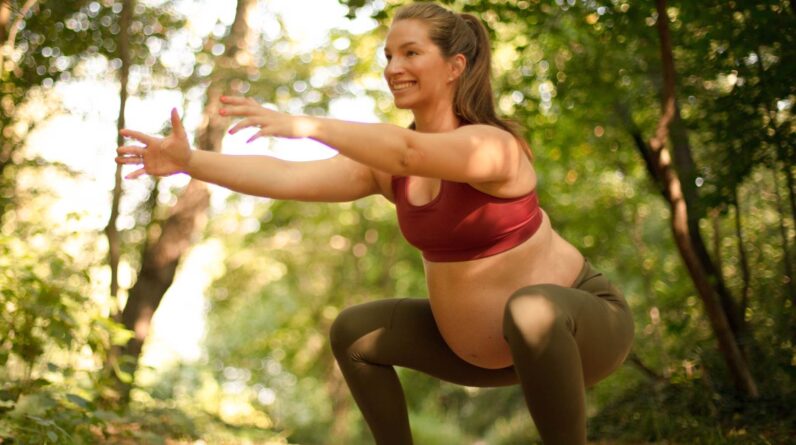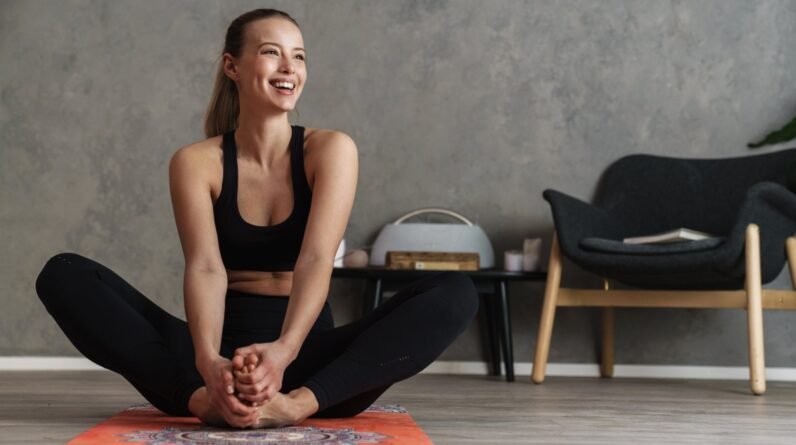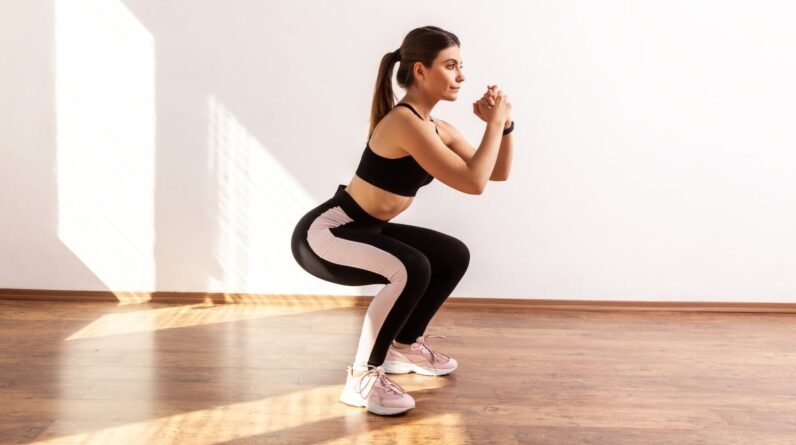
Doing squats in pregnancy can help with easing back aches as well as facilitate an easier delivery. Check out some safe ways to do this.
While pregnancy is a beautiful time for a woman, there are many aches and pains associated with this phase that can make this period seem daunting. Be it backaches, leg cramps or the fear of prolonged labour, many aspects of pregnancy can get overwhelming. As you try and relax during this time, some exercise tips can contribute to making this period a lot easier for you. One such tip is to do squats in pregnancy. Not only does this add to your flexibility and resolve backache, but it can widen your pelvic area, making way for the baby. This can result in easier labour as well. However, your safety is a priority, so make sure to consult your doctor first.
Can you do squats in pregnancy?
Squats can be useful for pregnant women but only when done correctly with supervision. “More specifically, women can utilise these moves, especially during pregnancy because squats have multiple benefits,” explains obstetrician and gynaecologist Dr Vishnu Priya. Doing squats in pregnancy comes with a host of benefits and it is touted to be one of the most effective exercise routines during this time. During the time of pregnancy, more support is needed in the lower body. This is why doing squats in pregnancy is a good idea to lower pregnancy-related discomfort as well as exhaustion. Squats in pregnancy can also help you while you are in labour as well as during your postpartum period. Here is a more details explanation of how these help:

Benefits of squats in pregnancy
Doing squats in pregnancy can be very helpful. Here are some of the benefits that they provide:
1. Strengthens pelvic floor muscles
Doing squats during pregnancy can enhance the pelvic floor, which assists in growing the child as well as primes the mother for delivery. A study, published in the journal Acta Obstetricia et Gynocologica Scandinavica, states that pelvic floor muscle training throughout pregnancy is a basic therapy in the prevention of complications for women. Among other things, preventing urinary incontinence is also one of the benefits of doing squats in pregnancy.
2. Improves posture and relieves back pain
When a woman is pregnant, the lower ribs may be extra strained. This can lead to back ache. A study, published in the Open Journal of Obstetrics and Gynecology, states that the prevalence of low back pain during pregnancy is high as 60%. However, doing squats during pregnancy can assist in strengthening the core with back exercises, thus lessening the pain.
3. Enhances mobility and flexibility
When you do squats in pregnancy, these help to expand and open the area of the hips which increases flexibility in the body. A study, published in the journal Evolution, Medicine & Public Health, states that doing squats in pregnancy significantly improves flexion at the sacroiliac joint (the joint that links the pelvis and lower spine) and enlarges the pelvic outlet. This helps in creating an easier passage of an infant through the birth canal. This, in turn, helps the body make way for the baby.
4. Encourages optimal fetal positioning
In some instances, doing squats during pregnancy can also facilitate the babies to adjust themselves in the required positions for childbirth. It also prepares you for labour. “This when done often also allows a woman to practice the labouring position giving her a sense of comfort and calmness while in active labour,” explains Dr Priya.
5. Boosts strength and endurance
Squats use a considerable amount of muscle in the lower sections of the body, especially the quadriceps, glutes and hamstrings. Doing squats in pregnancy is useful as these lower sections of the body are required to support added weight during the pregnancy and also during the time of pushing during delivery.
You may also like


How to do squats in pregnancy
Here are 4 safe methods of doing squats in pregnancy:
1. Basic bodyweight squat
- Position yourself with your feet apart at about the level of the shoulder width and let your toes be faced slightly outward.
- Ensure that your shoulders are relaxed, your back is straightened and your chest is up.
- Activate the muscles in your abdomen and then gradually go down as if you are sitting on a chair while bending your knees.
- Go down until your thighs are parallel with the floor or how much you feel comfortable to go.
- Maintain that position for a few seconds and then stand back up slowly.
- Do this for about 10-12 times for 2-3 sets.
2. Wall squat (for extra support)
- Place yourself with your back touching the wall and standing at a foot distance from the wall.
- Slide down slowly touching the wall with your back and hold the knees at a 90-degree angle as if sitting.
- Maintain this position for 10-20 seconds and slide back up in the same manner.
Repeat 8–10 times.
3. Using a chair when squatting (beginner level)
- Feet shoulder width apart, face a chair in stand position.
- Bend your knees and lower your torso until it hovers over the chair trying to sit down.
- Try to hold the position in the second step for a few seconds before standing back up. Repeat 10–12 times.
4. Wide-leg (sumo) squat
- Position yourself facing a chair with your feet apart at a level of shoulder width.
- Bend your knees in the same way one would do when preparing to sit down in a chair, but do not sit.
- Take that position for a couple of seconds and then stand upright.
- Repeat 10–12 times.
What to remember while doing squats in pregnancy?
Doing squats in pregnancy is generally safe if cleared by your doctor. They are especially helpful in the second and third trimesters as your body prepares for delivery. Here are some ways to ensure your safety while doing squats in pregnancy.
- First, see a doctor: First and foremost, it is wise to seek medical advice about exercises if one is facing a high-risk pregnancy.
- Maintain your posture: Do squats focusing on the right body posture as it could lead to extra pressure on your knees or lower back.
- For stability use a wall, chair or a partner: Use your partner’s body or any equipment for that case of support when your belly protrudes significantly.
- Be careful: Do not move too fast. Squats will require time and dedication, so if you have to do them, do it slowly at a controlled pace.
- Remember that your body will guide you: Do not force yourself with the squats if it hurts, raises your body temperature, or gets dizzy.
- Guiding actions: When sitting down do the opposite, exhale. And then inhale on your way up.
- Duration and frequency: Aim for 2–3 sets of 10–12 squats, 3–4 times a week, depending on your fitness level. Adjust the frequency if needed, and always prioritise rest.
- Equipment: No equipment is necessary, but yoga mats, chairs, or walls can provide additional support.

Who should not do squats in pregnancy?
You should not do squats in pregnancy if:
- You have a high-risk pregnancy: Conditions like placenta previa, cervical insufficiency, or preterm labour risks make squats unsafe.
- You experience pain or discomfort: Any pain in your pelvis, back, or knees is a sign to stop.
- Your doctor advises against it: Always follow personalized medical advice.
Note: Doing squats in pregnancy is a great way to stay active during this time, but safety is paramount. It is important to consult your doctor or a prenatal fitness expert before starting.
Related FAQs
Do squats help with easy delivery?
Yes, squats can be helpful when it comes to an easy delivery. It widens the pelvic opening and gives gravity an opportunity to help the process.
How many squats a day can you do during pregnancy?
While you should only do exercise which your body allows during this time, however, to 15-20 squats are safe to do when you are pregnant. But make sure to consult your doctor first.







